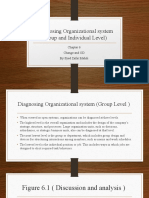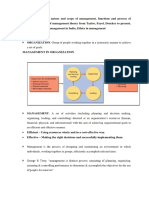0% found this document useful (0 votes)
17 views36 pagesObject-Oriented System Analysis
Object-oriented system analysis models system components as 'objects' that interact, with classes serving as blueprints for creating these objects. Key concepts include encapsulation, relationships (association and aggregation), and the use of Unified Modeling Language (UML) for visual representation. Benefits of object-oriented modeling include faster software development, easier maintenance, and the ability to reuse designs and functions.
Uploaded by
awoyeleemma1Copyright
© © All Rights Reserved
We take content rights seriously. If you suspect this is your content, claim it here.
Available Formats
Download as PPTX, PDF, TXT or read online on Scribd
0% found this document useful (0 votes)
17 views36 pagesObject-Oriented System Analysis
Object-oriented system analysis models system components as 'objects' that interact, with classes serving as blueprints for creating these objects. Key concepts include encapsulation, relationships (association and aggregation), and the use of Unified Modeling Language (UML) for visual representation. Benefits of object-oriented modeling include faster software development, easier maintenance, and the ability to reuse designs and functions.
Uploaded by
awoyeleemma1Copyright
© © All Rights Reserved
We take content rights seriously. If you suspect this is your content, claim it here.
Available Formats
Download as PPTX, PDF, TXT or read online on Scribd
/ 36





















































































